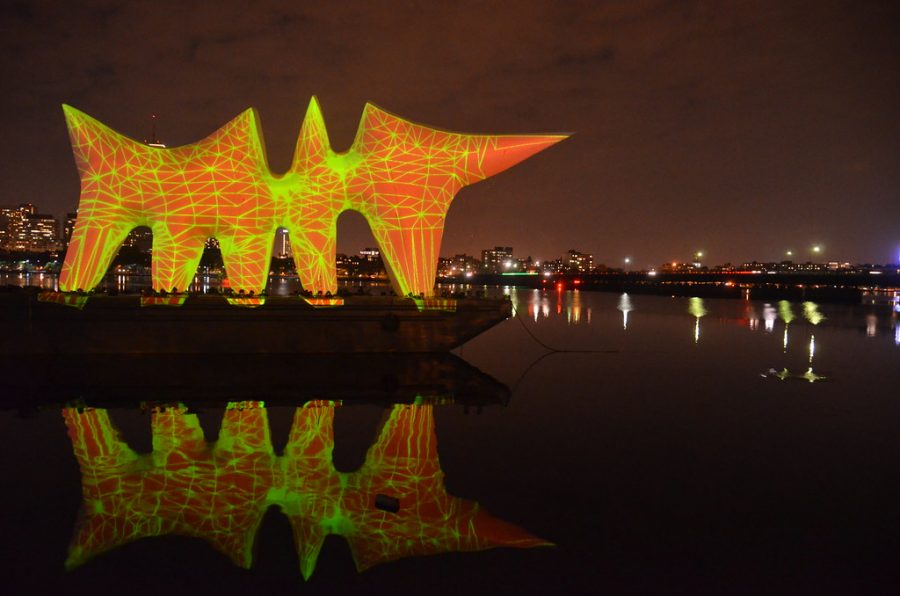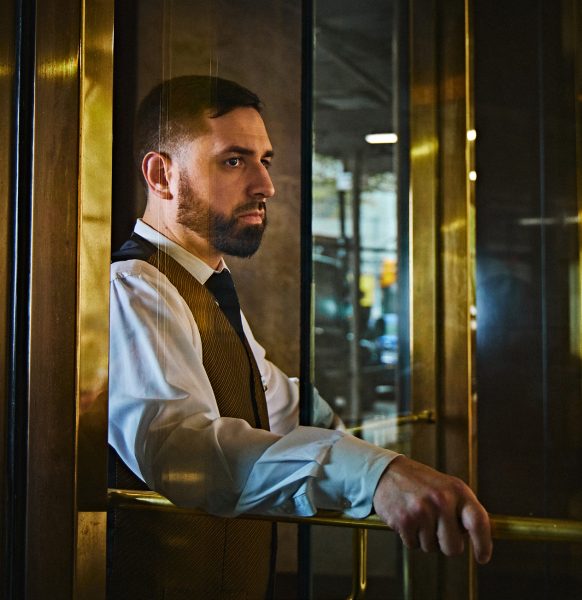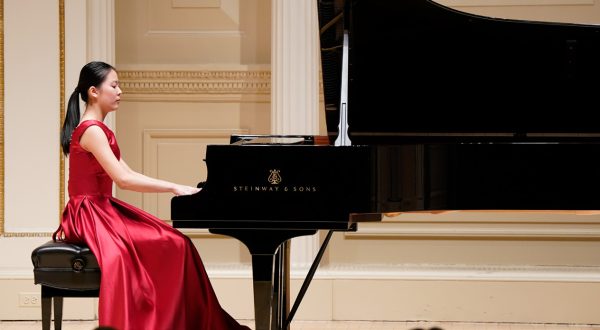Architect Receives Alumni Award
Chris Devers flickr.com/cdevers
Liquid Archive, designed by Gediminas Urbonas and NADAA, was featured at the MIT 150 Festival in 2011.
Architect Nader Tehrani ’81 has designed buildings from the futuristic, environmentally-friendly Helios House in Los Angeles to the geometric wood structure of the Melbourne School of Design.
On April 5, 2021, students and faculty joined an all-school meeting to honor Tehrani as the 2020-21 Alumni Award Recipient. Tehrani has taught at the MIT School of Architecture and Planning and Harvard Graduate School of Design. He is currently dean of the Irwin S. Chanin School of Architecture at the Cooper Union in New York and a founding member of the architecture and urban design firm, NADAAA.
Each year, the Alumni Award honors an alum selected by the Alumni Association Nominating Committee. The committee works to identify candidates who have brought exceptional honor and distinction to themselves and the community, made significant and lasting contributions in their fields, and earned the recognition of their peers on a global scale. The Alumni Award aims to inspire students to make an impact on the world and serves as an embodiment of the school’s motto, “Guided by each other, let us seek better paths.” Paul Mutter ’87 presented the award on behalf of the Alumni Association and the Board of Governors Nominating Committee.
Following Mutter’s remarks, Tehrani recounted his career, which began at Hotchkiss. When Tehrani first entered the school as a Lower Mid in 1978, his language foundation was weak, as his family had moved frequently during his childhood. Tehrani was the child of an Iranian diplomat, and had lived in England, South Africa, Pakistan, and Iran throughout his youth. Upon arriving at the school, Tehrani was impressed by the now remodeled Stubbins’s facade of Main Building. His newly discovered passion for design and architecture altered Tehrani’s perspective on life; as he said during the all-school meeting, “[Visualization] serves as a substitute [for] language. Visual literacy and learning to see became a way of internalizing the world around me.”
Throughout his time at the school, Tehrani encountered many faculty members who encouraged him to pursue an artistic career. In particular, Blanche Hoar, former instructor in art, made a lasting influence on him. Tehrani said, “Her energy, her tone, and her passion are something I will always remember, and more than anything else the encouragement she gave, instilling in me a confidence unworthy of anything I had yet accomplished, but something that was in great need in order to forge ahead.”
Hotchkiss educators helped Tehrani to form his own teaching motto: “There are no right answers, only good questions.” Explaining the motto, Tehrani said, “The best teachers taught us to unlearn what we thought we knew so well, and gave us the confidence to rewrite the grand narratives.”
Tehrani attended and then taught at the Rhode Island School of Design and the Harvard Graduate School of Design. In 2020, he received the Arnold W. Brunner Memorial Prize from the American Academy of Arts and Letters. He was also elected a member of the Academy in 2021, one of the highest forms of recognition for artists in the United States.
Tehrani’s recent work focuses on addressing global issues, such as population growth and sustainability. For example, Tehrani is currently working on a project in Venice that uses renewable materials. He said, “If we would want to imagine our own survival in the coming centuries, it would mean that we have to de-center the human out of the equation to prioritize other ecologies first.”
After speaking to the school, Tehrani visited the AR452S Architecture II class, where he answered students’ questions. Topics discussed included Tehrani’s inspirations, how an architecture design firm works, and more.
Tehrani’s remarks and achievements made a lasting impact on many students. Clark Dong ’22 said, “Studying Tehrani’s work, I could see a lot of very natural geometric shapes. They are very calming to me, and [I was intrigued as to how] architecture could have such an effect on me. Therefore, I aspire to create emotional impacts with my designs.” Dong also felt connected to Tehrani’s upbringing. “Like [Tehrani],” he said, “I feel like [I’m] in a cultural muddle all the time, as I grew up in Hong Kong, Beijing, and the U.S. Just like Tehrani, I often turn to architecture to express myself when words fail.”
Tehrani’s Zoom meeting with the architecture class can be viewed via this link (passcode 6.zK2$v=).






